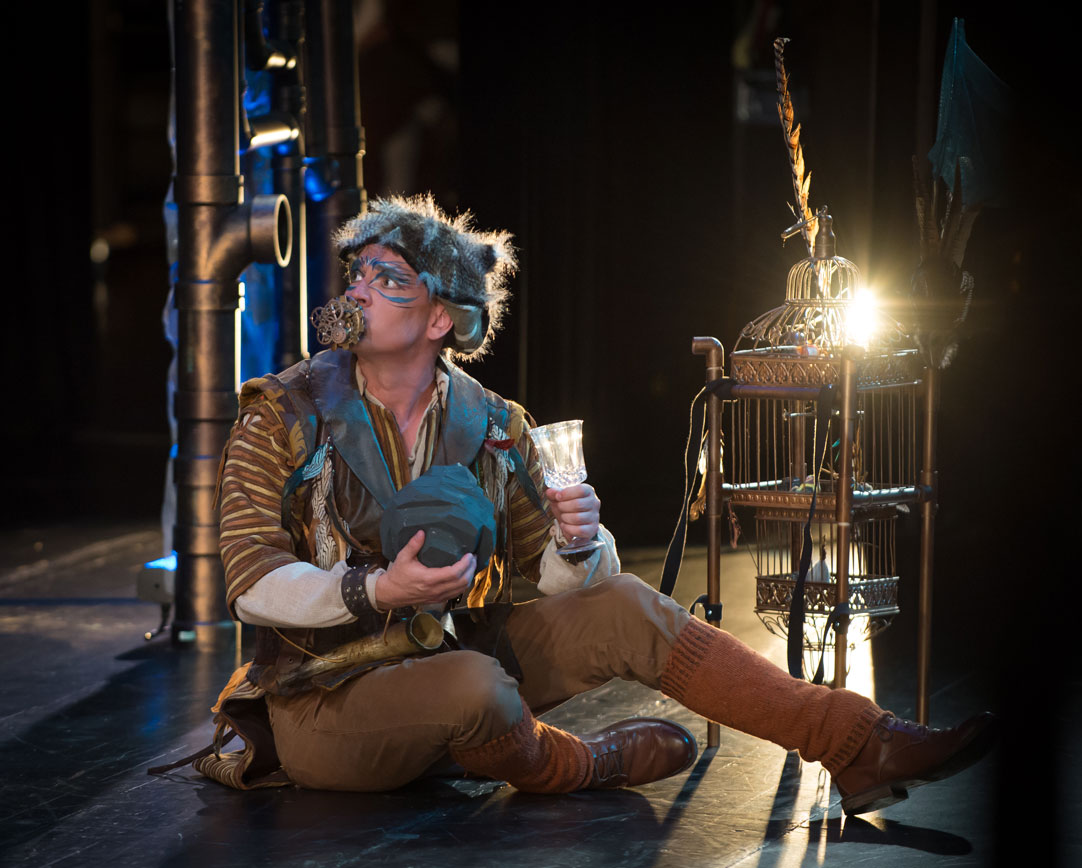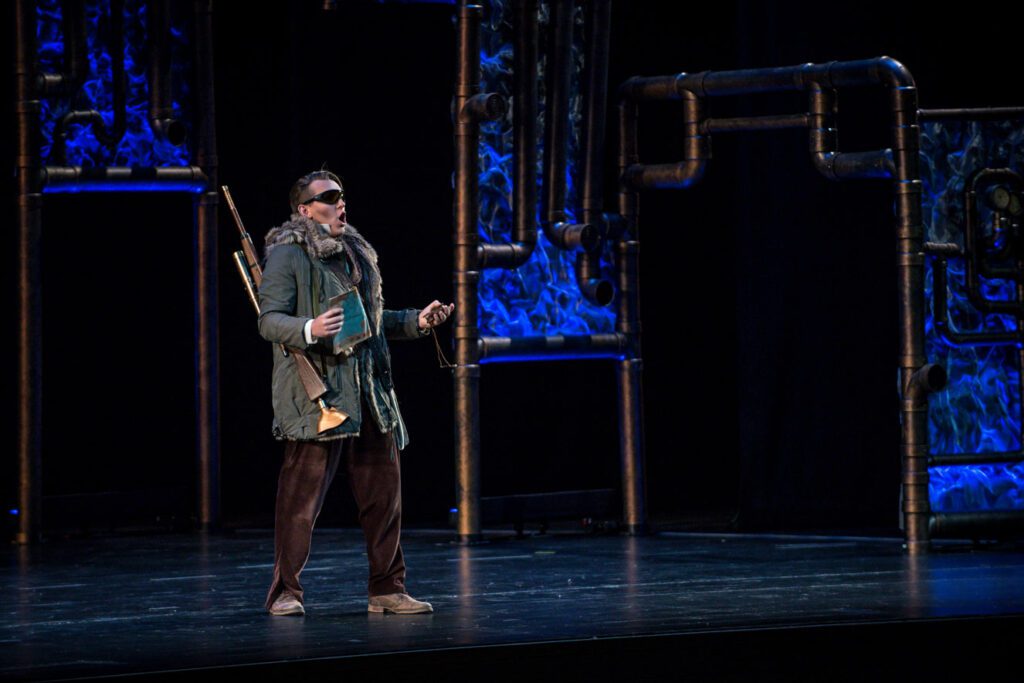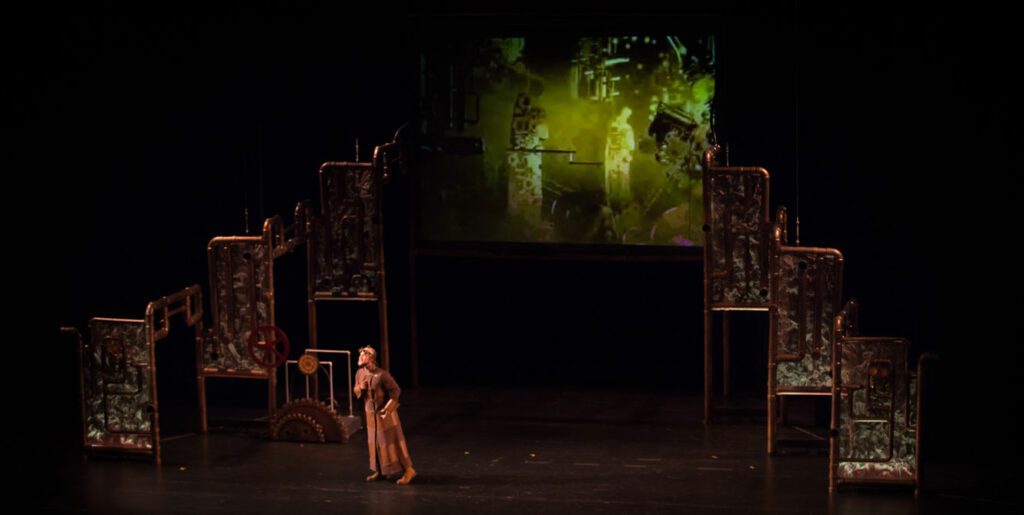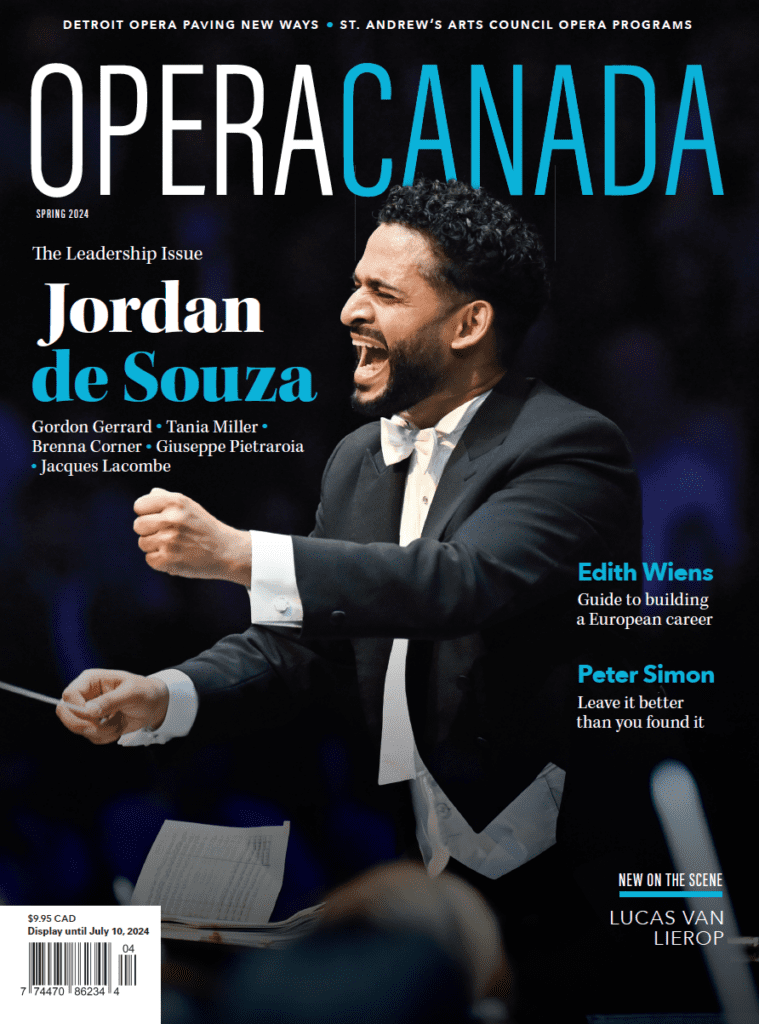After a seven-year absence, fully staged opera returned to FirstOntario Concert Hall for one night as BrottOpera mounted Mozart’s The Magic Flute (seen July 19) in an English-language production directed by Patrick Hansen.
Founded in 2014, BrottOpera’s two-week program has singers participate in masterclasses and perform in a concert gala and a staged production accompanied by the National Academy Orchestra (NAO), an assemblage of auditioned, university-aged apprentices alongside a rotating crew of mentors culled primarily from Canadian orchestras.
The NAO is the resident orchestra of the nine-week summertime Brott Music Festival, and during the back half of the year is heard in educational concerts in Hamilton as well as annual traversals through Handel’s Messiah. From the roughly 300 singers who auditioned for BrottOpera’s Artistic Director Boris Brott and Co-Artistic Director Taras Kulish last December in Toronto, Montreal, and New York, only 16 were chosen for roles in Flute.
Lyric tenor Zachary Rioux was an ardent and impetuous Tamino, displaying the former attribute in the “O image” aria, and the latter in his dialogue with Johnathon Kirby’s suitably measured Speaker during their well-executed double recitative in the Act I finale.
Soprano Anne-Marie MacIntosh displayed lovely timbre in her finely phrased rendition of Pamina’s “Ah, I feel.” American coloratura Holly Flack hit all the money notes in the Queen of the Night’s “The wrath of hell” aria, interpolating a note an octave higher than written in six instances.
Max van Wyck, who was an enjoyable Papageno, sang with firm tone including a fully rounded B flat on the word “pain” in the Act II finale. Megan Miceli mixed just the right amount of humour and spice as the Old Lady/Papagena, matching van Wyck dramatically and vocally in their “Pa-pa-pa” duet. Elizabeth Polese, Morgan Traynor, and American mezzo Juliana Curcio blended beautifully as the Three Ladies mirthfully fussing over an unconscious Tamino during the “O help me” introduction. A similarly balanced performance was also heard from Reba Sigler, Daniela Agostino, and Emma Bergin as the Three Spirits.
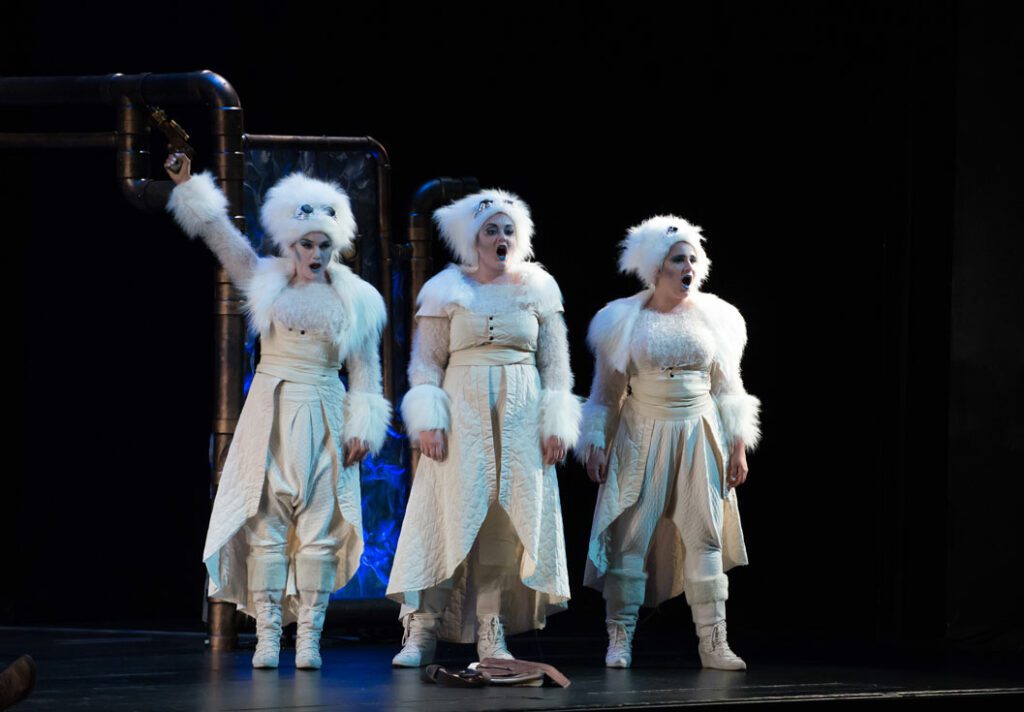
Juliana Curcio, Morgan Traynor and Elizabeth Polese (the Three Ladies) in Brott Music Festival’s The Magic Flute. Photo: Bob Hatcher.
As Monostatos, tenor Jan van der Hooft’s voice hasn’t yet blossomed to its fullest. Bass Simon Chalifoux was also a touch on the light side for Sarastro. Though he has a slight lisp on some sibilants, Chalifoux’s low F sharps and an interpolated final low E in “Within these holy portals” projected easily to the back of the auditorium.
American tenor James Smith was solid as the First Armed Man opposite Léo McKenna as the Second Armed Man. Norman Reintamm’s 13-member chorus was effective. There were, however, a few vocal miscues by this young cast: an odd wrong note here, a messed up entry there, and Mozart’s sotto voce instructions could have been better executed.
In the pit, Brott was an excellent accompanist, pacing Flute well, and drawing out a warm yet captivating sound from his 46-piece orchestra. There was much attention to detail, the exact duration of the trombones’ quarter notes in the Armed Men’s chorale being one example. However, the strings’ chord on the singers’ word “night” prior to the finale’s March were both times not held for their full value, and the final quarter note chord of Flute was needlessly turned into a half note inordinately lengthened by a fermata.
Patrick Hansen’s staging of Flute, with Ginette Grenier’s mod steampunk-styled costumes, was premiered in 2013 by Opera McGill, with Brott conducting the McGill Chamber Orchestra. Not only did Hansen update the proceedings from ancient Egypt to the Queen of the Night’s unnamed frozen dominion, but he also repositioned Tamino, Pamina and Sarastro’s trio to right after the latter’s “O Isis and Osiris.” In this way, Tamino didn’t speak to Pamina until after having asked permission from the Armed Men to break his silence in the Act II finale.
Ruth and Thomas Martin’s English translation, published by G. Schirmer, Inc., was used with tweaks here and there. The spoken dialogue was heavily trimmed and modified.
Vincent Lefèvre’s set comprised of one large video screen placed centre stage, flanked on either side by three smaller screens. His video projections on the main screen juxtaposed revolving gear wheels with trippy, psychedelic footage, contrasting sharply with nature scenes that set time and place. Greg Kott’s lighting was understated throughout—something brighter than a soft green might have been expected in the “Rejoice! Rejoice!” passage.
The artistic strength of BrottOpera’s first fully staged foray in FirstOntario Concert Hall should be a boost to their audience-building efforts, hopefully meriting an opening of both balconies of the 2,193 seat auditorium for future productions.

